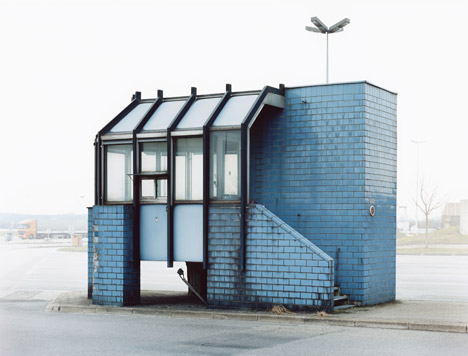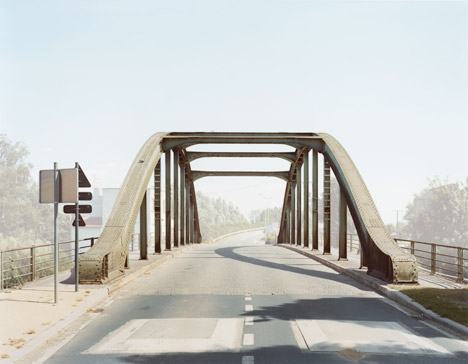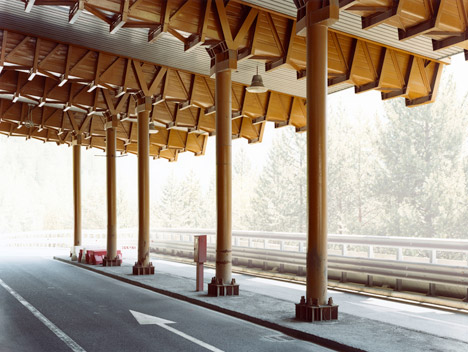Josef Schulz documents abandoned checkpoint architecture across Europe
Photo essay: disused military checkpoints and border stations across Europe are catalogued in this series by Polish-born photographer Josef Schulz (+ slideshow).
Named Übergang after the German word for crossing, the series of images depicts transnational borders that have become redundant. Each shot has also been digitally manipulated so that the surroundings of each structure appear to have been shrouded in fog.
Schulz hopes the series will highlight how these physical traces of borders – many of which no longer exist – are difficult to forget. "Borders were lines, drawn not only across territories but also through our heads," he explains.
In the past, national borders were divisive by character. In some cases their purpose was to delineate between political, legal, fiscal and monetary systems, in others between linguistic and cultural differences. Borders were lines, drawn not only across territories but also through our heads. Thus, anything that was different, incomprehensible or irritating belonged in its very own physically defined space.

In present-day Europe, internal borders are losing their political and economical function of demarcation. But border posts are much easier to abolish than mental barriers, and thus we continue to be conscious of former borders.
Cultural divides that continue to exist are not necessarily perceived as negative, but for many of us the geographical enlargement of the European Union and its present size are almost impossible to fathom. The long-term repercussions of an externally functional unit that at the same time is culturally and conceptually torn apart are not assessable as yet.

The theme of my work is that of former border stations at inner-European frontiers. In working with these images, what was primarily subject to modification was the background.
Landscape contexts are no longer recognisable. Border landscapes become unspecific and exchangeable. Documentary-style sequencing and de-contextualisation reduce the border posts to a model. Architectural perceptions and period trends in individual countries become apparent. The border posts resemble abandoned sentinels or faded monuments of past partition. They will remind us of what has yet to be achieved, recalling that they could one day easily be returned to their previous function.

Moreover, my interest in these past places of border-line experience can be traced back to the story of my own life. I grew up in Poland, a country whose territory has been repeatedly redefined in the course of history.
The border police have now disappeared from our frontiers, too, and the border stations seem quite harmless today – but they will continue to conjure up unsettling images in our minds for many years to come.